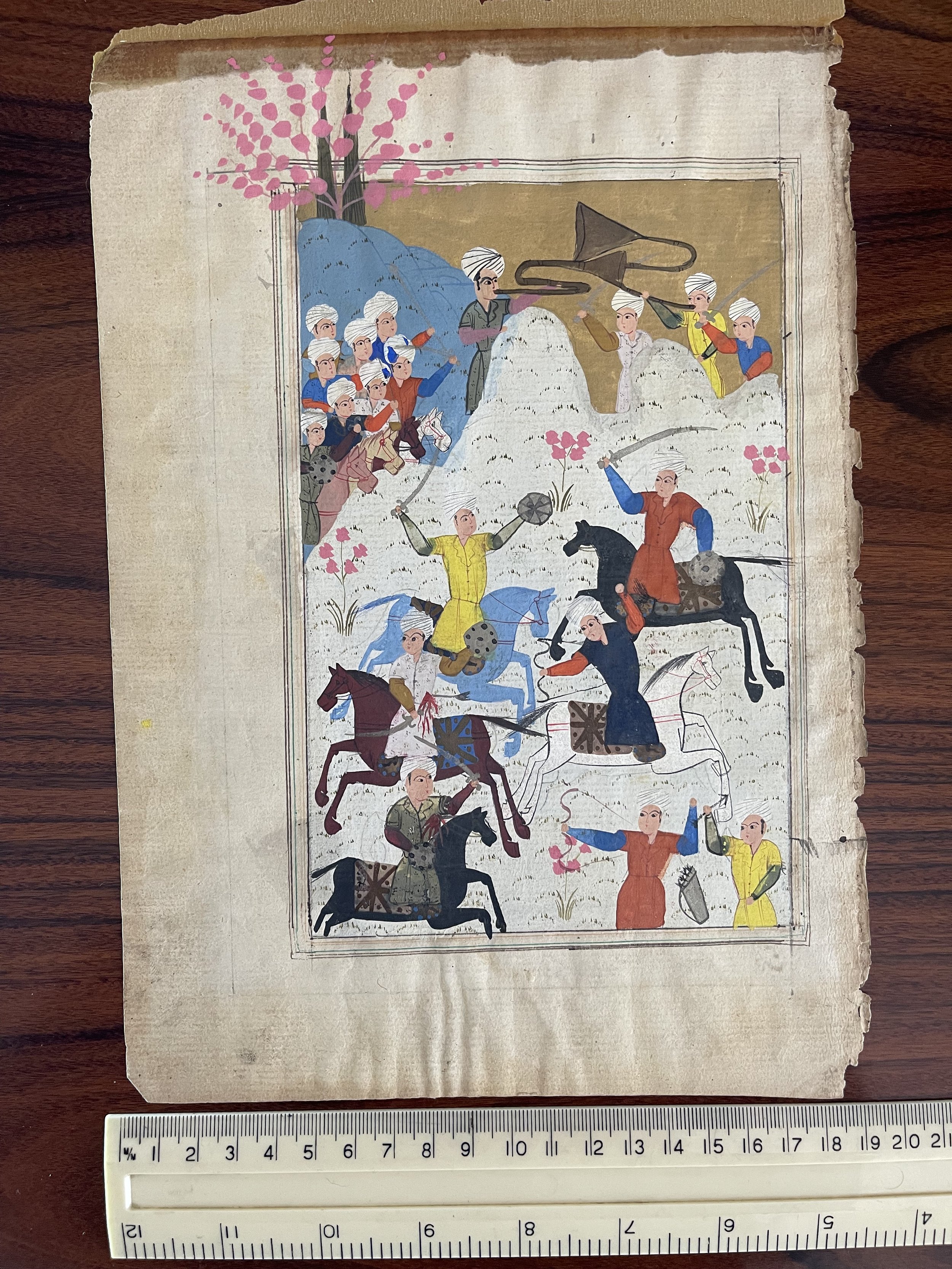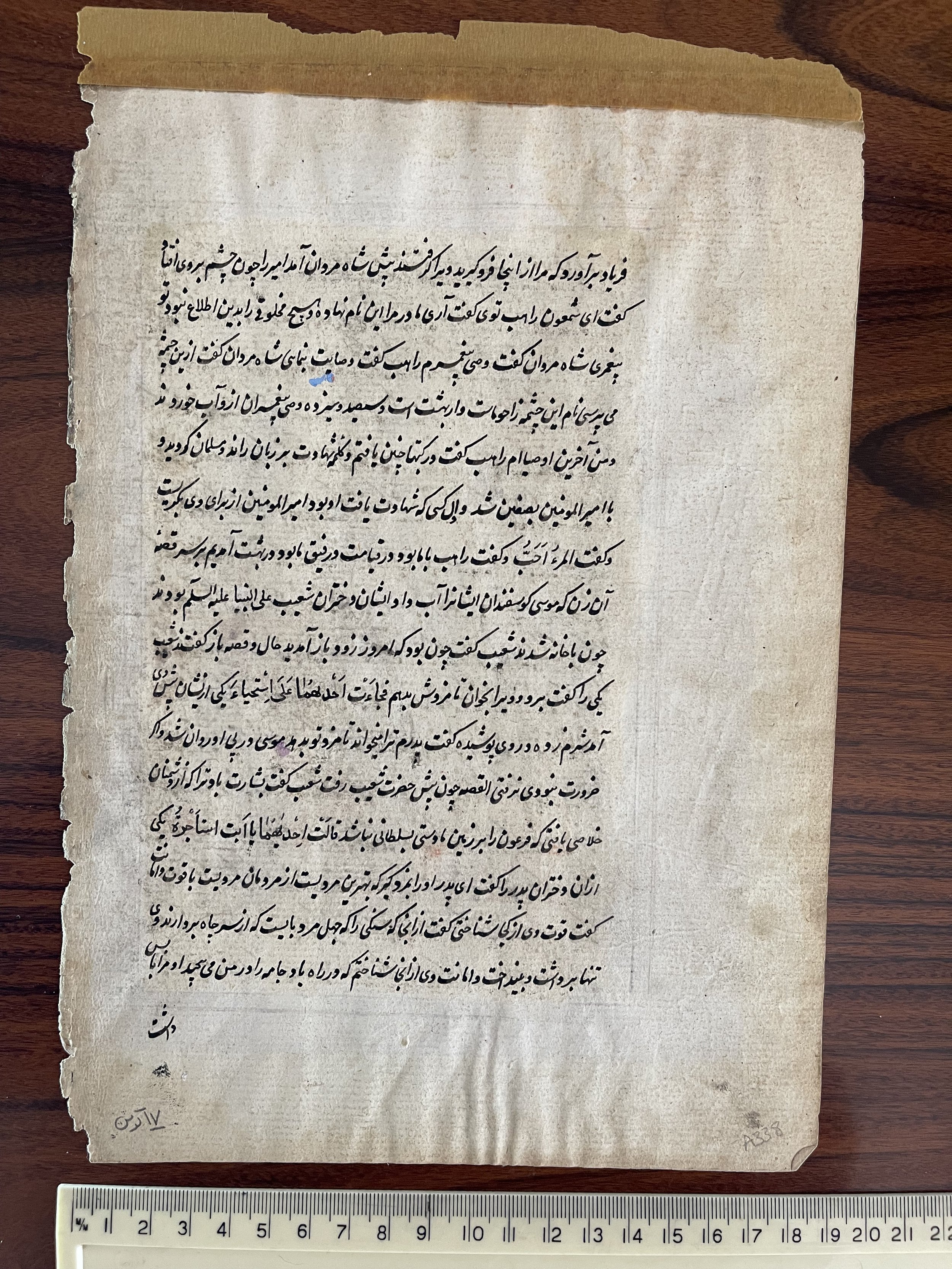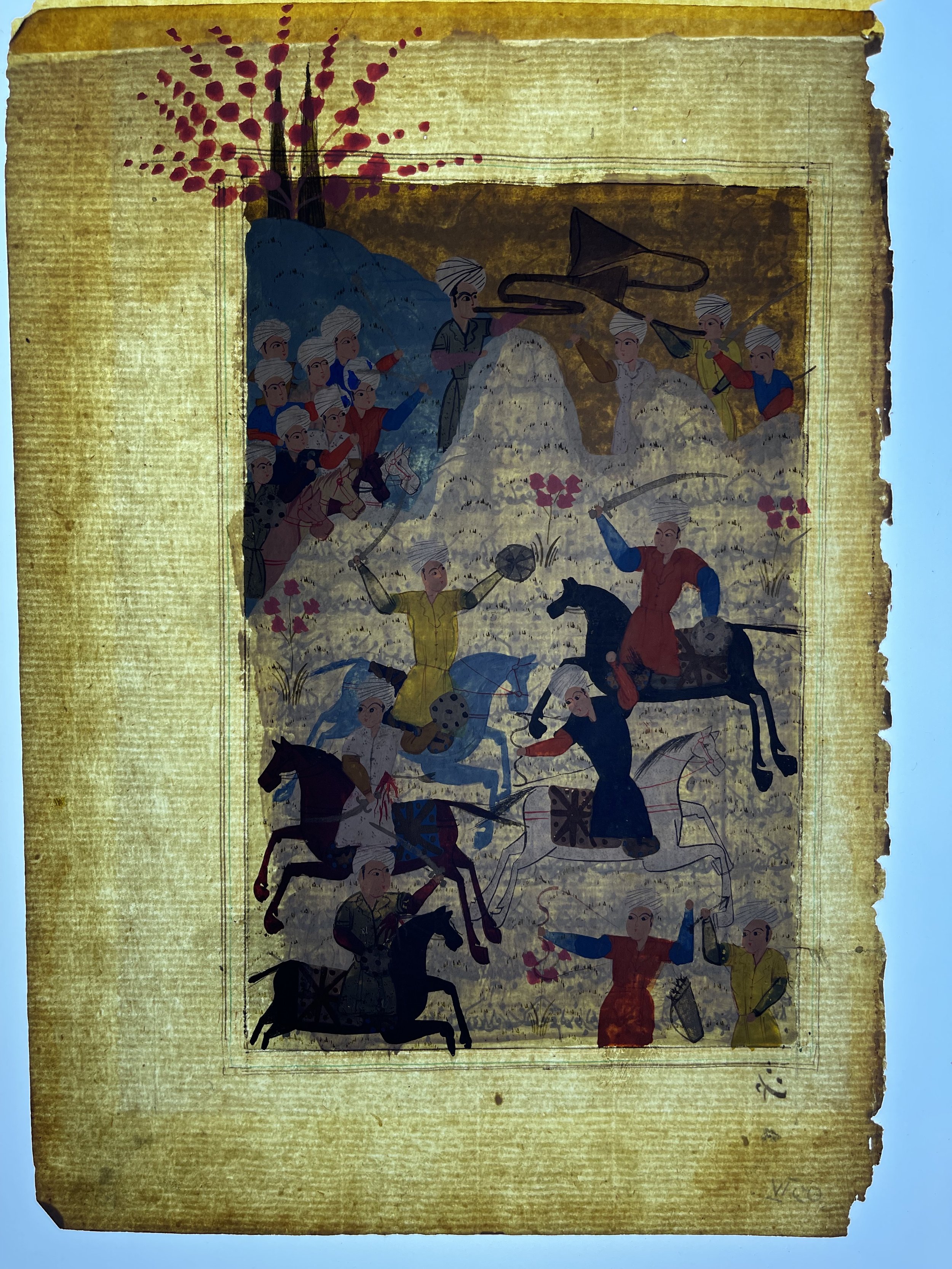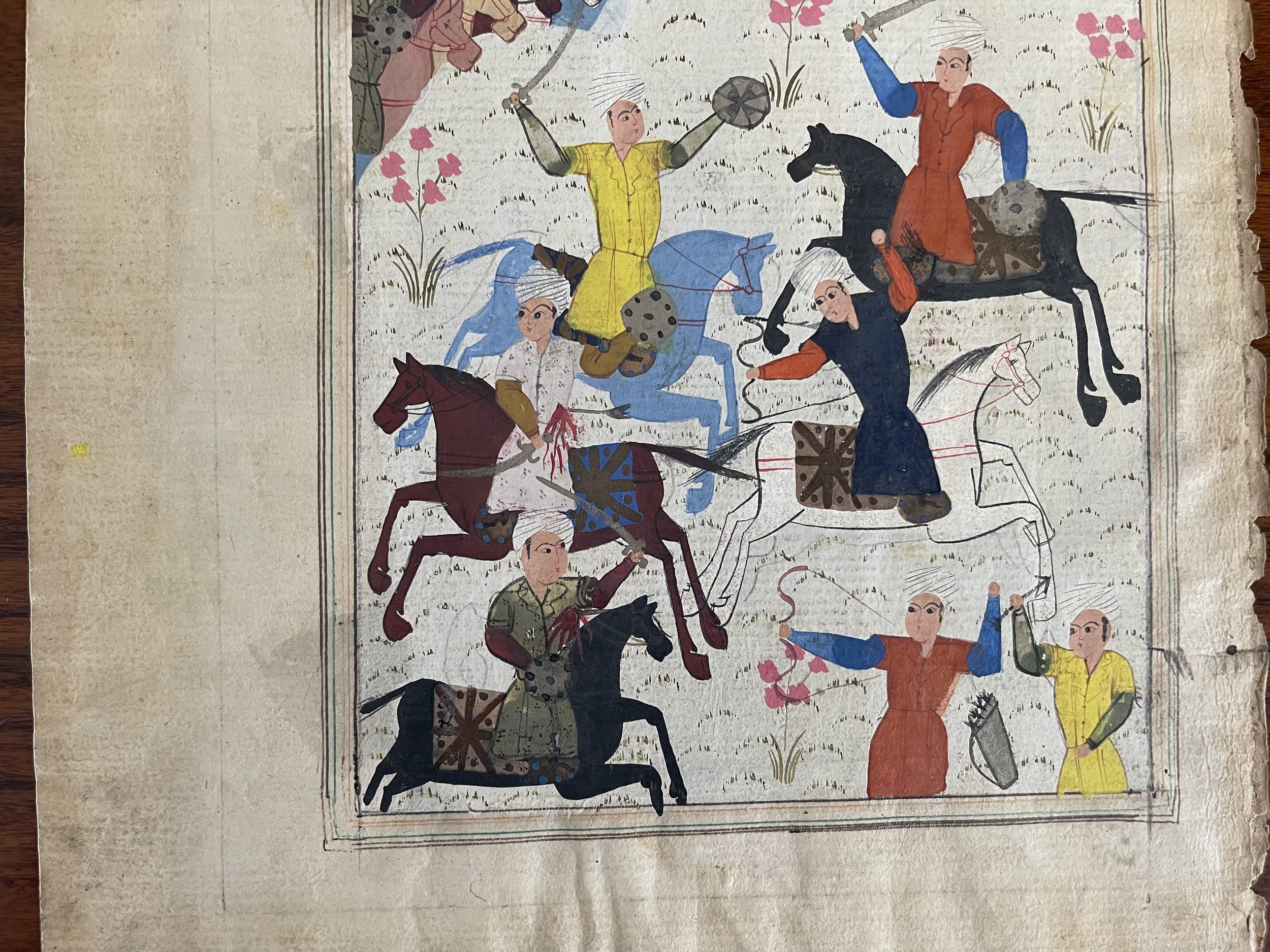Islamic / Persian Indo Painting and illustrated manuscript Quran? - Tabriz, Iran, 1520s – 1540s?
Very scarce Islamic / Persian Indo Painting rare and illustrated manuscript Quran? - Tabriz, Iran, 1520s – 1540s?
Tribal Battle Scene / Warriors on horseback, fighting.
Laid Paper - 16th Century Indo Manuscript Painting. Islamic Script on the verso
The Mughal painting style later spread to other Indian courts, both Muslim and Hindu, and later Sikh, and was often used to depict Hindu subjects. This was mostly in northern India. It developed many regional styles in these courts, tending to become bolder but less refined. These are often described as "post-Mughal", "sub-Mughal" or "provincial Mughal". The mingling of foreign Persian and indigenous Indian elements was a continuation of the patronage of other aspects of foreign culture as initiated by the earlier Delhi Sultanate, and the introduction of it into the subcontinent by various central Asian dynasties such as the Ghaznavids.
The Mughal painting style later spread to other Indian courts, both Muslim and Hindu, and later Sikh, and was often used to depict Hindu subjects. This was mostly in northern India. It developed many regional styles in these courts, tending to become bolder but less refined. These are often described as "post-Mughal", "sub-Mughal" or "provincial Mughal". The mingling of foreign Persian and indigenous Indian elements was a continuation of the patronage of other aspects of foreign culture as initiated by the earlier Delhi Sultanate, and the introduction of it into the subcontinent by various central Asian dynasties such as the Ghaznavids.
Very scarce Islamic / Persian Indo Painting rare and illustrated manuscript Quran? - Tabriz, Iran, 1520s – 1540s?
Tribal Battle Scene / Warriors on horseback, fighting.
Laid Paper - 16th Century Indo Manuscript Painting. Islamic Script on the verso
The Mughal painting style later spread to other Indian courts, both Muslim and Hindu, and later Sikh, and was often used to depict Hindu subjects. This was mostly in northern India. It developed many regional styles in these courts, tending to become bolder but less refined. These are often described as "post-Mughal", "sub-Mughal" or "provincial Mughal". The mingling of foreign Persian and indigenous Indian elements was a continuation of the patronage of other aspects of foreign culture as initiated by the earlier Delhi Sultanate, and the introduction of it into the subcontinent by various central Asian dynasties such as the Ghaznavids.
The Mughal painting style later spread to other Indian courts, both Muslim and Hindu, and later Sikh, and was often used to depict Hindu subjects. This was mostly in northern India. It developed many regional styles in these courts, tending to become bolder but less refined. These are often described as "post-Mughal", "sub-Mughal" or "provincial Mughal". The mingling of foreign Persian and indigenous Indian elements was a continuation of the patronage of other aspects of foreign culture as initiated by the earlier Delhi Sultanate, and the introduction of it into the subcontinent by various central Asian dynasties such as the Ghaznavids.
Very scarce Islamic / Persian Indo Painting rare and illustrated manuscript Quran? - Tabriz, Iran, 1520s – 1540s?
Tribal Battle Scene / Warriors on horseback, fighting.
Laid Paper - 16th Century Indo Manuscript Painting. Islamic Script on the verso
The Mughal painting style later spread to other Indian courts, both Muslim and Hindu, and later Sikh, and was often used to depict Hindu subjects. This was mostly in northern India. It developed many regional styles in these courts, tending to become bolder but less refined. These are often described as "post-Mughal", "sub-Mughal" or "provincial Mughal". The mingling of foreign Persian and indigenous Indian elements was a continuation of the patronage of other aspects of foreign culture as initiated by the earlier Delhi Sultanate, and the introduction of it into the subcontinent by various central Asian dynasties such as the Ghaznavids.
The Mughal painting style later spread to other Indian courts, both Muslim and Hindu, and later Sikh, and was often used to depict Hindu subjects. This was mostly in northern India. It developed many regional styles in these courts, tending to become bolder but less refined. These are often described as "post-Mughal", "sub-Mughal" or "provincial Mughal". The mingling of foreign Persian and indigenous Indian elements was a continuation of the patronage of other aspects of foreign culture as initiated by the earlier Delhi Sultanate, and the introduction of it into the subcontinent by various central Asian dynasties such as the Ghaznavids.
Code : A338
Cartographer : Cartographer / Engraver / Publisher: Islamic Unknown
Date : Publication Place / Date - 1520-1540 Approx
Size : Sheet size: Image Size: 20 x 29.5 cm
Availability : Available
Type - Genuine - Antique
Grading B
Where Applicable - Folds as issued. Light box photo shows the folio leaf centre margin hinge ‘glue’, this is not visible otherwise.
Tracked postage, in casement. Please contact me for postal quotation outside of the UK.




